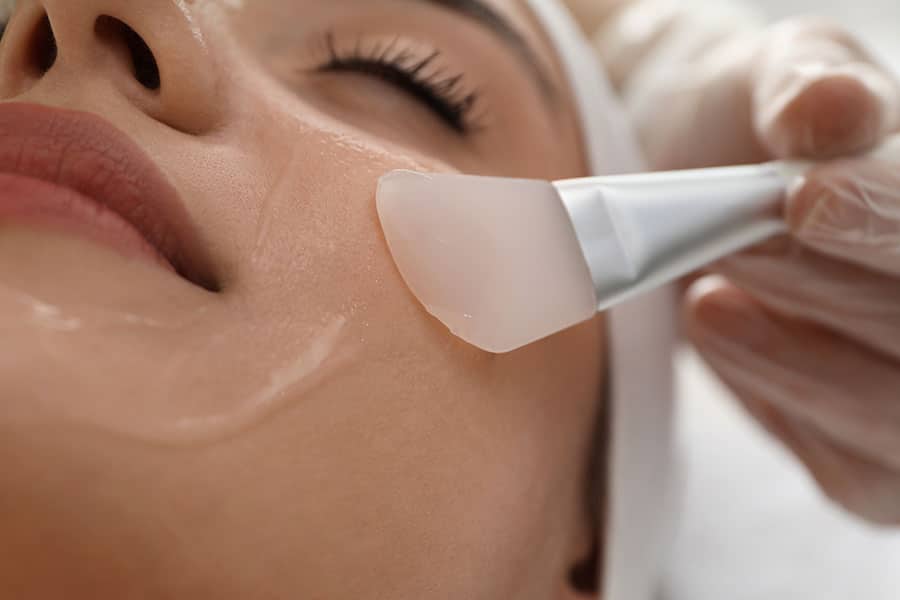Chemical peels can vastly improve the appearance of your skin. During the treatment, your doctor will apply a chemical solution to your skin that will cause it to blister. This causes your skin to peel off. It is replaced by a new skin that is much smoother and blemish-free. Chemical peels can be applied on the neck, face, or hands. They are very effective at:
- Reducing fine lines around your mouth and under your eyes
- Treating wrinkles caused by aging and sun damage
- Improving the appearance of scars
- Treating certain kinds of acne
- Reducing dark patches, freckles, and age spots that result from taking birth control pills or due to pregnancy
- Improving the look and feel of your skin
If there are any sun-damaged areas on your skin, they will improve after being treated with a chemical peel. After the treatment, your skin might be more sensitive to the sun, which means that wearing sunscreen after undergoing the procedure is essential.
Make sure that you use a broad-spectrum sunscreen, as they protect your skin from both UVA and UVB rays. Also, it should be at least SPF30. Wear a hat with a wide brim to protect your face from the sun.
Are you an Ideal Candidate for a Chemical Peel?
Light-haired and fair-skinned patients are excellent candidates for chemical peels. That does not mean that you can’t opt for a chemical peel if your skin is on the darker side. You will get good results depending on the problem you want to be treated. That being said, there is a good chance that you might have an uneven skin tone for a few days after the procedure.
Bulges, skin sags, and severe wrinkles don’t respond well to chemical peels. There are a number of other treatment options for these conditions, like a facelift, laser resurfacing, eyelid lift, brow lift, or soft tissue fillers.
How Does the Peel Work?
Chemical peels contain a solution like trichloroacetic acid, glycolic acid, salicylic acid, carbolic acid or lactic acid. A combination of one or more of these acids is used to create a controlled wound on the surface of your skin. This causes the skin to peel off and the new skin takes its place.
You might feel a burning or stinging sensation when the peel is being applied to your face. This lasts for about five to ten minutes. Your surgeon will place cool compresses on the skin to help you with the stinging. If you are going in for a deep chemical peel, then your surgeon will prescribe painkillers to help you with the discomfort.
Are there Any Risks to this Treatment?
There is a very minor risk of obtaining post-surgical marks in certain areas of your face, but they can be treated if they do occur. If you have a history of herpes outbreaks, then a chemical peel can reactivate the cold sores. In cases such as these, your surgeon will prescribe you medication to help treat it. Make sure you give your surgeon a detailed medical history when you go in for a consultation.
Contact Our Office
If you want refined skin that looks healthier and smoother, a chemical peel is the solution you’re looking for. Contact us to schedule a consultation with Dr. Richard A. Bartlett, a highly experienced plastic surgeon with years of experience, to learn more about the treatment options available to you and the benefits it can provide.
